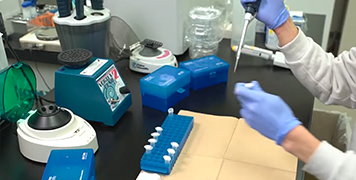Environmental DNA (eDNA) is a new method to analyze water and/or soils of habitats of target species to estimate their existence. Since this approach does not require to collect sample organisms, its usefulness and applicability to conservation of biological diversity is high expected. With this meta-barcoding analysis, the existence/non-existence of not only single species but also larger species groups are detectable. So, environmental monitoring with eDNA has become popular rapidly in recent years. Japan is one of the leading countries of development and application of eDNA analysis, and it is strongly recommended that Japan disseminate know-how of this state-of-the-art technique to the world.
CEARAC Activity
CEARAC has implemented various activities by using remote sensing technology as its main mandate and launched a new activity with eDNA in the hope of its high potential as a new monitoring technology. However, a common methodology of eDNA method has not been established in the world yest because it is still new among environmental scientists and researchers. Therefore, as the first step, it is necessary to establish a common procedure of how to use eDNA method in environmental monitoring and assessment.
Then, CEARAC translated the eDNA sampling and experiment manual by the eDNA Society, Japan, into English to share the technique among the researchers in the NOWPAP member states. The manual explains the whole procedure step by step: from preparation of samples to how to use analytical devices.
CEARAC also developed video versions of the manual in English and the four languages of the NOWPAP member states in 2022-2023 to facilitate understanding of the eDNA method among young researchers and students.
eDNA Sampling and Experiment Manual (Video Manual) View details→


